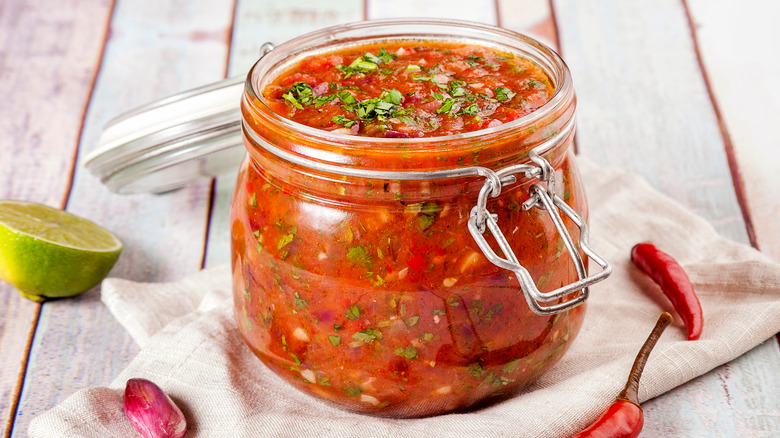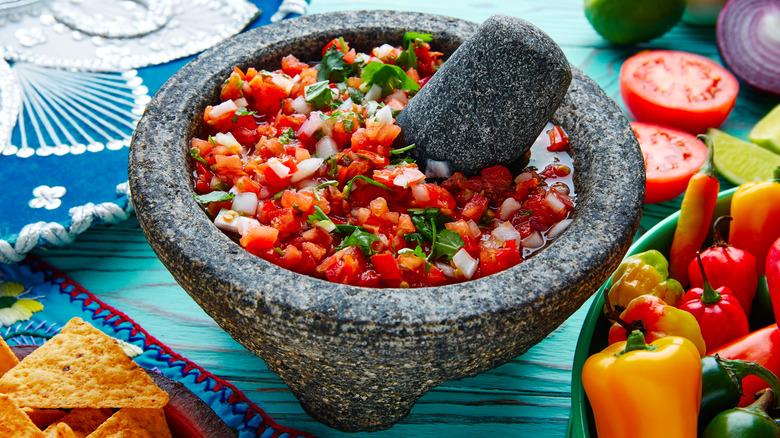What's The Difference Between Picante And Salsa?
Sometimes, the best part of a particular dish is the sauce. But why are sauces even used in cooking? According to Britannica, sauces are used to "provide flavor, moisture, and a contrast in texture and color." Just imagine a burger without the sauce – it probably wouldn't be nearly as popular as it is. And in the world of food, there are many types of different sauces. The most famous ones are the five French mother sauces that were created by chef Auguste Escoffier. Those include béchamel, velouté, Espagnole, hollandaise, and tomato sauce, and you've probably tasted or made at least a few of them (via Healthline).
And in Latin American countries, there is a whole world of tasty salsas. The word translates as "sauce," and these condiments are made in many different variations with different ingredients, depending on the country and region. Besides being flavorful and providing that much-needed moisture to dishes, salsa is typically very healthy and low in calories (per Dressings-Sauces).
And if you're also a fan of picante sauce, you might think it's the same as salsa, but the two might be a bit more different than you thought.
Picante has a thin consistency, while salsas are usually chunky
MasterClass reports that both salsa and picante are spicy sauces, and although they're very similar, there are some key differences between them. In Mexican cuisine, salsa picante is essentially a hot sauce, which is defined by its thin consistency and consists of vinegar, red peppers, salt, and spices. The American picante sauce, on the other hand, is a salsa dating back to the 1940s, when it was named "Pace picante sauce." This one is made with finely chopped tomatoes, onions, and jalapeños. But there's more: the Latin American and Mediterranean salsas are based on tomatoes and other ingredients such as hot peppers, corn, and squash.
And the differences between salsa and picante are usually related to the texture and uses in cooking. For example, salsas usually have a chunkier texture than the finely chopped veggies in picante. In addition, picante is thinner, so it's usually poured on tacos, while salsa is more commonly served with nachos or as an accompaniment to Mexican dishes. If you're craving a nice salsa, your best bet is to make a classic pico de gallo with chunky tomatoes, onions, cilantro, jalapeños, garlic, and lime juice (via BBC Good Food). And those who are more into picante can easily use it as a dipping sauce or try it with scrambled eggs for a spicy kick (per We Want The Sauce).

